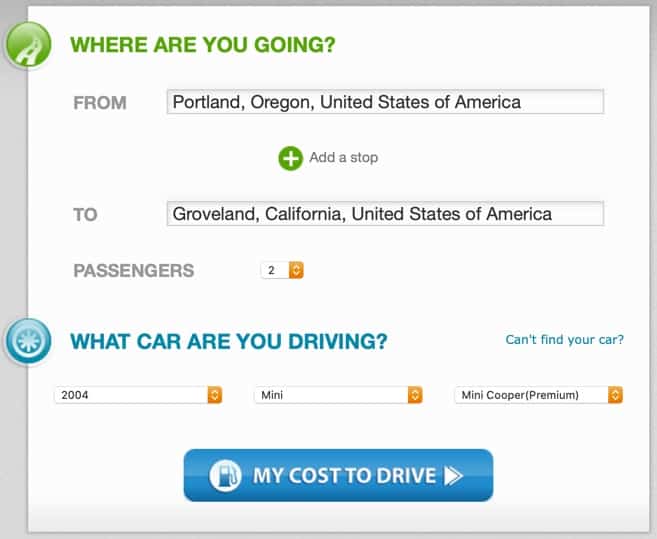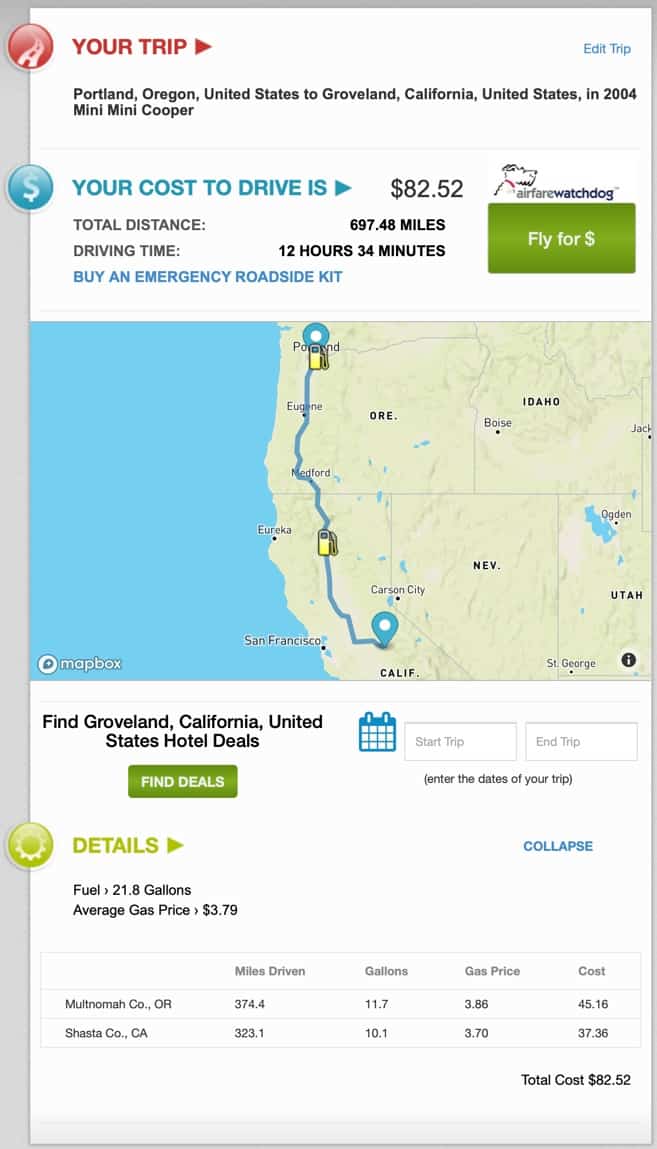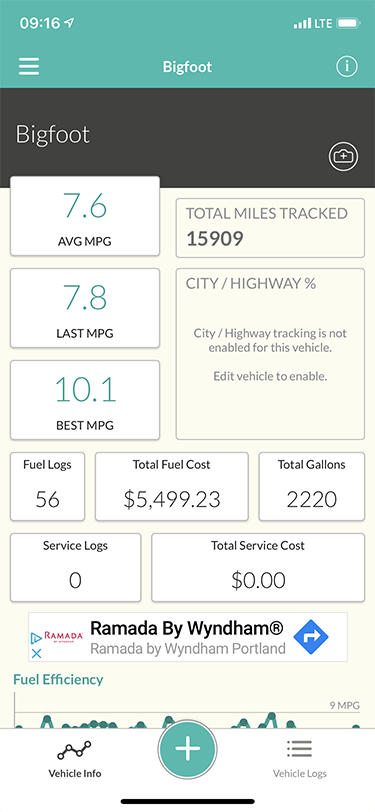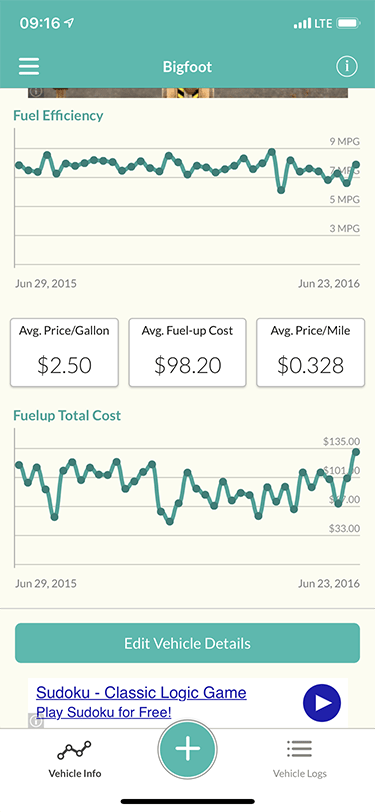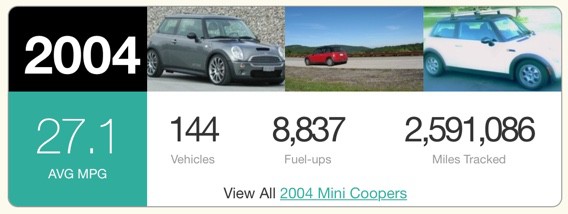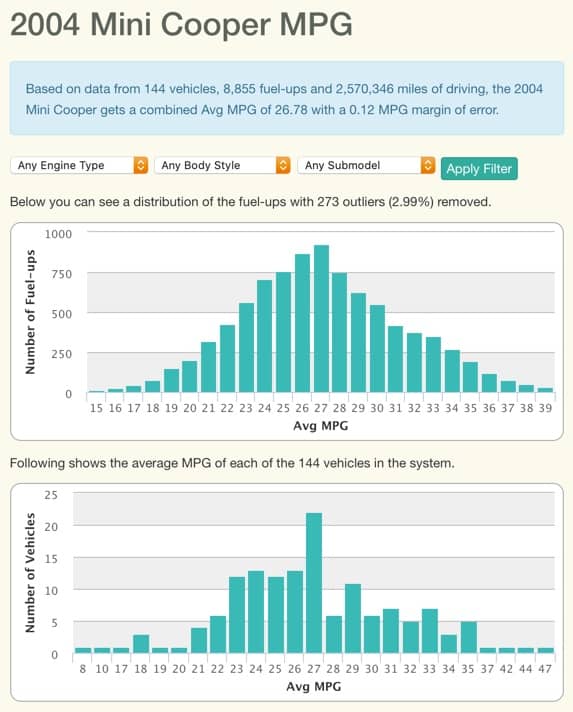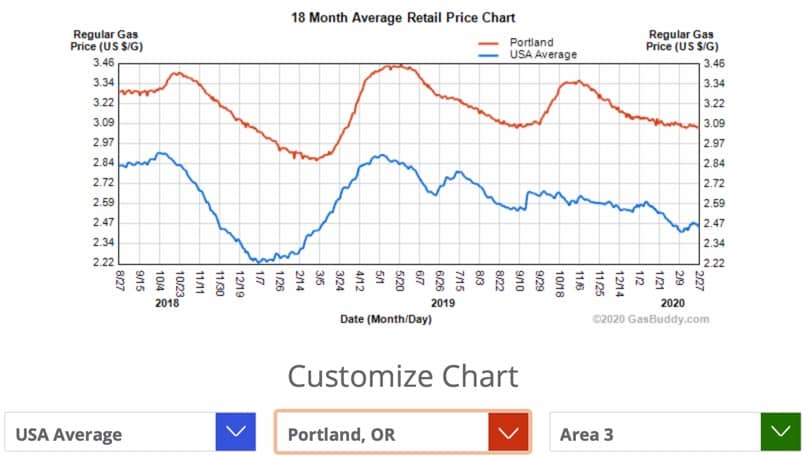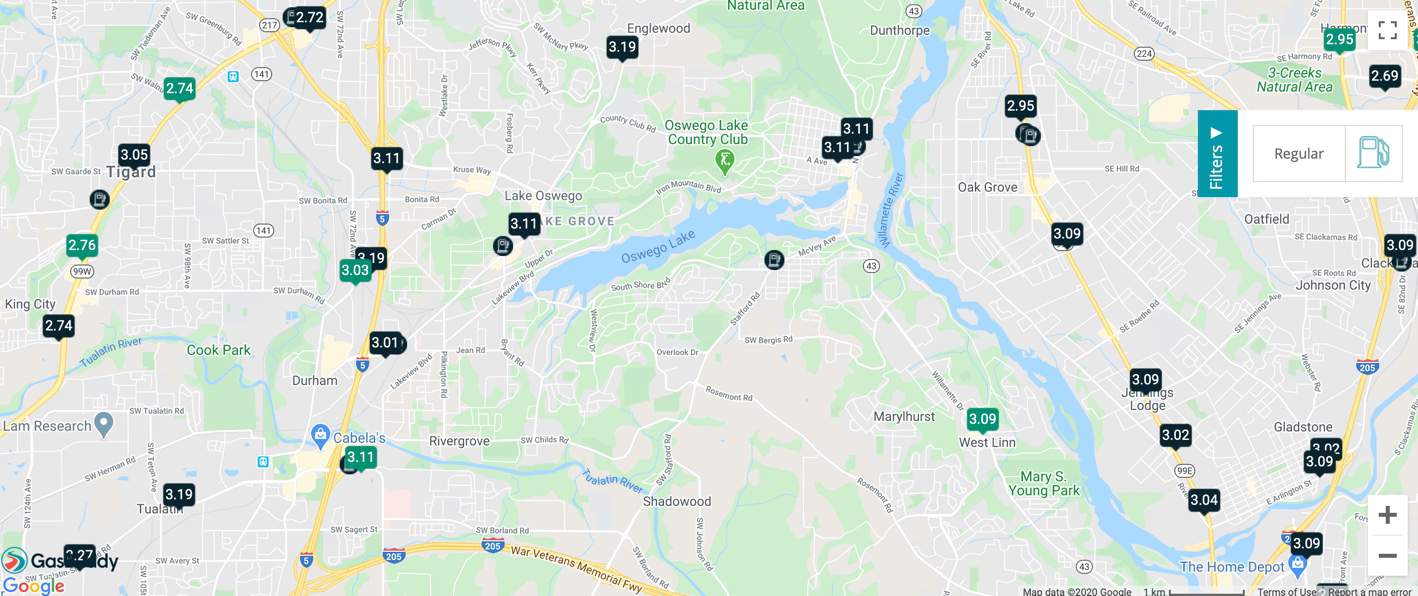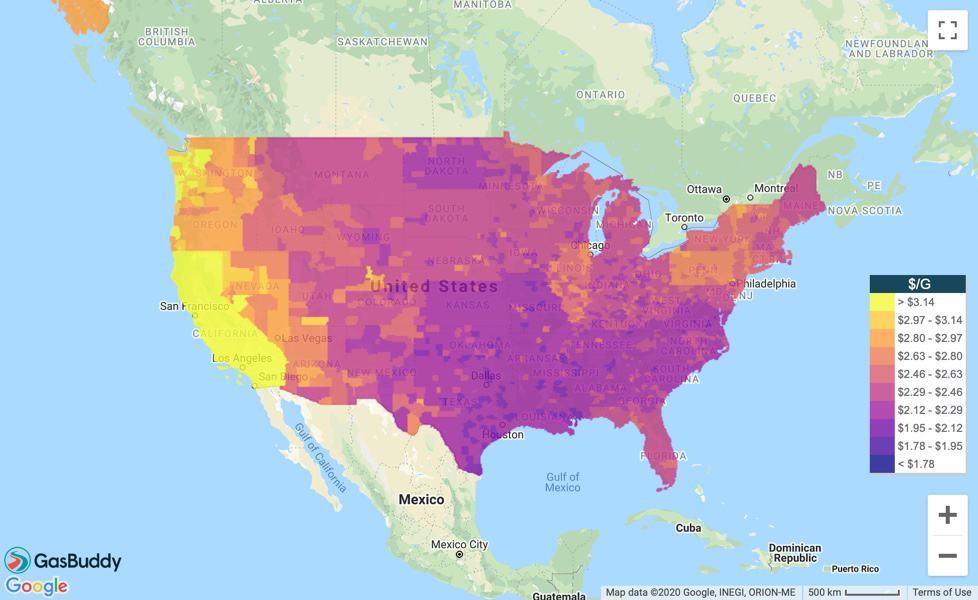Cost to drive calculators: How much does it cost to drive?
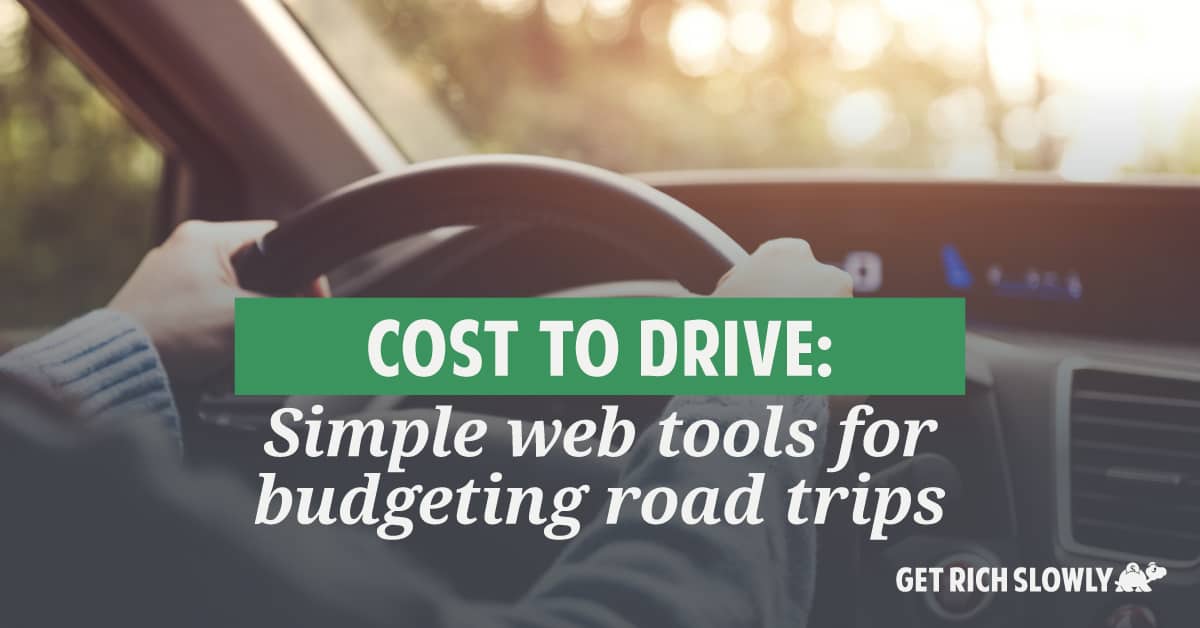
My girlfriend recently bought a new car. After 23 years, she sold her 1997 Honda Accord to a guy who's more mechanically inclined than we are. Kim upgraded to a 2016 Toyota RAV4, and she loves it.
One of her primary considerations when searching for a new car was the cost to drive it. In her ideal world, she would have purchased a fully-electric vehicle but it just wasn't in her budget. The RAV4 hybrid was a compromise. According to fueleconomy.gov, it gets an estimated 32 miles per gallon. (And actual users report 34.7 miles per gallon.)
Kim's quest for a fuel-efficient car prompted me to revisit apps and online tools that help users track their driving and fuel habits. I've written about these in the past — and, in fact, this is an updated article from 2008! — but haven't looked into them recently.
Here's a quick look at some of my favorite driving cost calculators, tools, and apps.
Cost to Drive
Cost to Drive (stylized Cost2Drive) is an easy-to-use web app that estimates how much you'll spend to drive from point A to point B. Enter your starting point (address, city, state, or zip code) and your destination, enter your vehicle information, then click a button.
That's it. Cost to Drive calculates travel distance, approximate driving time, and an estimate of your fuel costs. Here, for instance, is how much it would cost to drive from Portland to visit Kim's brother in Groveland, California.
This tool is handy for road trips, of course, but it's also useful for extended journeys. Before Kim and I set out on our R.V. trip across the U.S., I used Cost to Drive to estimate how much we'd spend on fuel. (I was way off, but that's not the fault of the tool. I overestimated the fuel economy of our motorhome!)
This isn't the sort of tool that you'll use every day, but it's certainly useful enough to bookmark for later use.
Folks in Europe — and possibly the rest of the world — might want to play with the Via Michelin app, which offers route planning and driving cost calculations.
Fuelly
While we only used the Cost to Drive once for our R.V. trip, we used the Fuelly app every single day. And I still use it today.
Fuelly is primarily a smartphone app with which you can track your vehicle's fuel economy. Whenever you stop to pump gas, you enter mileage and pricing info into the app, and it computes how much it costs to drive.
Here, for instance, are two screencaps from Fuelly showing how it tracked info for our motorhome.
To get more accurate estimates of the cost to drive your vehicle, you can also log maintenance info in Fuelly. And, as you can see, the free version of the app is ad supported. Ad-free premium versions are available, and they include added features.
While the Fuelly website doesn't offer a lot, there's one feature that I think GRS readers will find interesting. If you select the browse vehicles option from the main menu, you, you can get a profile of driving info for all Fuelly users. Here, for instance, is what the app has tracked for other folks who own a 2004 Mini Cooper, like me.
GasBuddy
A decade ago, GasBuddy was a gas price aggregation tool. It collected fuel price info from across the United States, and served it up so that visitors could find the best prices in their area.
Today, GasBuddy is still that website, but it's a whole lot more. For instance, you can look up a chart of gas price trends over the past couple of years.
Or you can find local maps and national maps of current gas prices.
And because it's 2020 now, GasBuddy offers a smartphone app featuring all sorts of tools to help you calculate (and reduce) your fuel costs.
FuelEconomy.gov
FuelEconomy.gov is the official U.S. government source for fuel economy info. Like all U.S. government sites, it's a treasure trove of data and resources.
The site includes a car finder (and comparison) tool (also available for iOS and Android devices), a vehicle power search, a fuel savings calculator, and more. There's even a page exploring extreme MPG!
The site also provides some widgets for site owners (like me!) to share with their audience. Here's
Find a Car ToolThis tool lets you look up official EPA fuel economy ratings for vehicles back to the 1984 model year. |
Gas Mileage TipsThis tool displays a fuel-saving tips and provides links to additional tips on fueleconomy.gov. |
Each year, the U.S. Department of Energy and the U.S. Environmental Protection Agency produce a Fuel Economy Guide to help buyers choose fuel-efficient vehicles. You can find guides from recent years in the Get Rich Slowly file vault, if you're interested: 2020, 2019, 2018, 2017, 2016, 2015.
If you're into alternative fuels and advanced technology vehicles, the U.S. Department of Energy has a bunch of different widgets to play with at their Alternative Fuels Data Center.
Sidenote: Many folks want a new Tesla or Prius in order to minimize their impact on the environment. This isn't as straight-forward as it might seem. The calculations are complicated but the bottom line is this: In many cases, it makes more sense to keep (or buy) an older fuel-efficient vehicle than to buy a new one. That's because the manufacturing process itself is the source of roughly 25% of a car's environmental impact.
The Bottom Line
It's important to note that even the best driving cost calculator has limitations. Most of these tools track only fuel costs, which are a small portion of the overall cost to drive your car.
Your true cost of car ownership includes the purchase price,insurance, maintenance, and more. According to the American Automobile Association, the average new vehicle costs 62 cents per mile to drive. AAA figures the average driver spends $9,282 per year on her automobile.
To truly determine how much you're spending to get around, you need to take matters into your own hands. Find a cheap notebook or pad of paper. Grab a pen or pencil. Whenever you make a trip – even if it’s just down the street – log the time and the distance. Write down how much you spend on fuel and maintenance. Tally your car and insurance payments.
Do this long enough and you'll begin to get a picture of your personal driving costs. At any point, you can simply divide the amount you've spent on your vehicle by the number of miles you've driven to learn how much it costs to drive.
What you do with this info is up to you!
Note: This is an updated article from the GRS archives. The original version from 03 December 2008 was woefully out of date. Some older comments have been retained.
Become A Money Boss And Join 15,000 Others
Subscribe to the GRS Insider (FREE) and we’ll give you a copy of the Money Boss Manifesto (also FREE)



